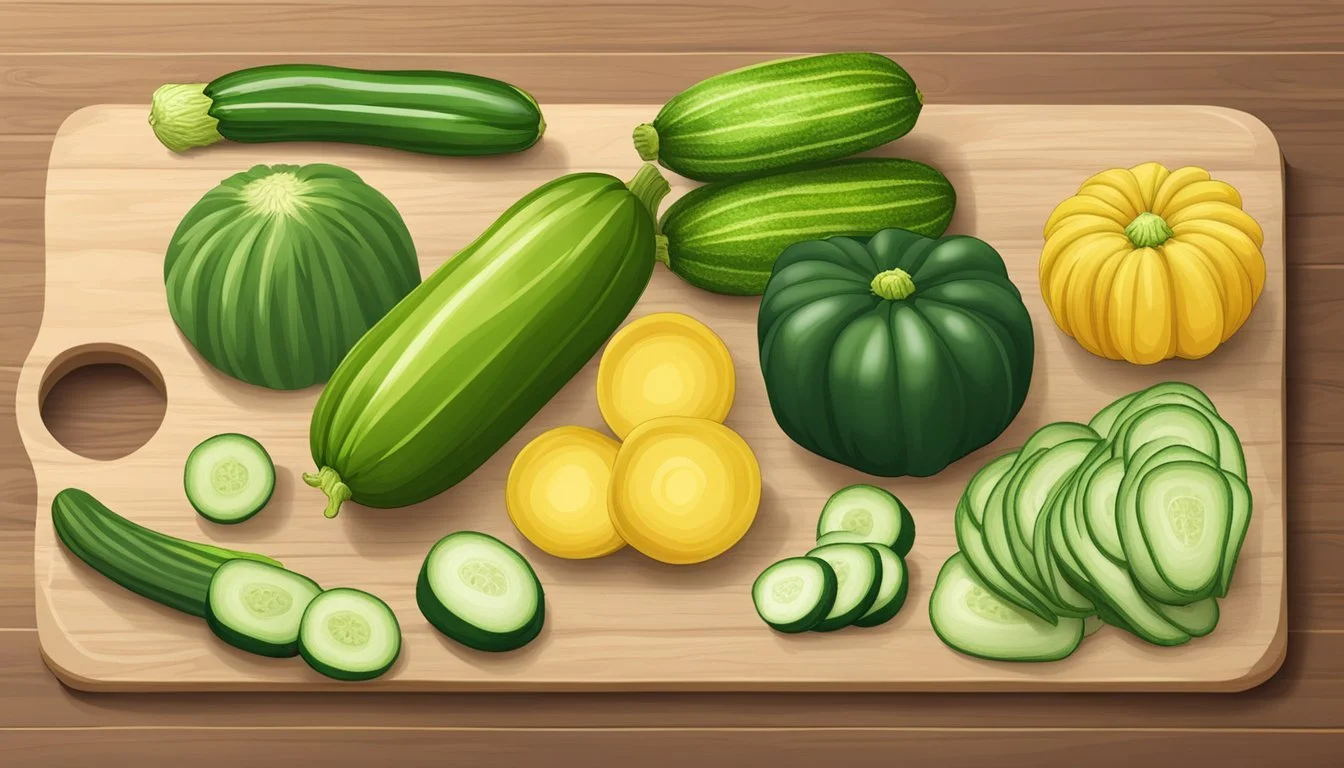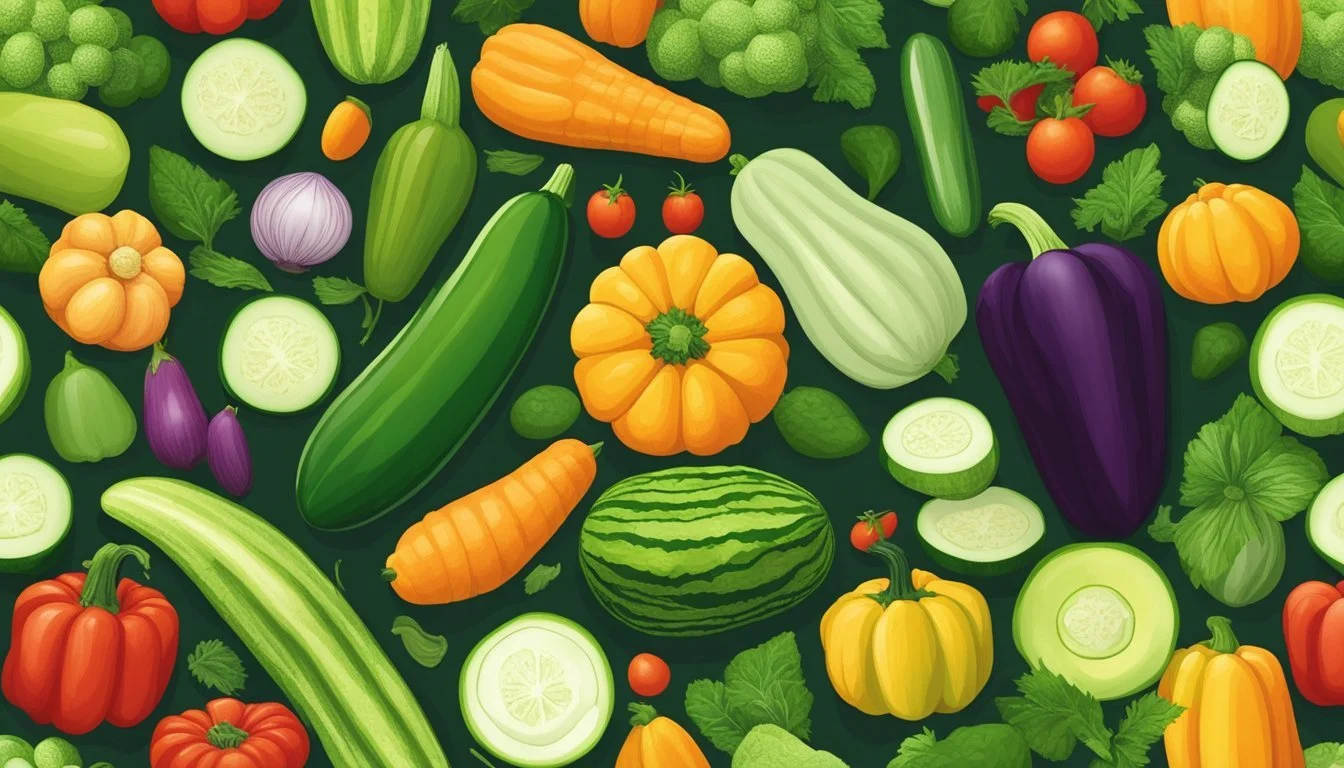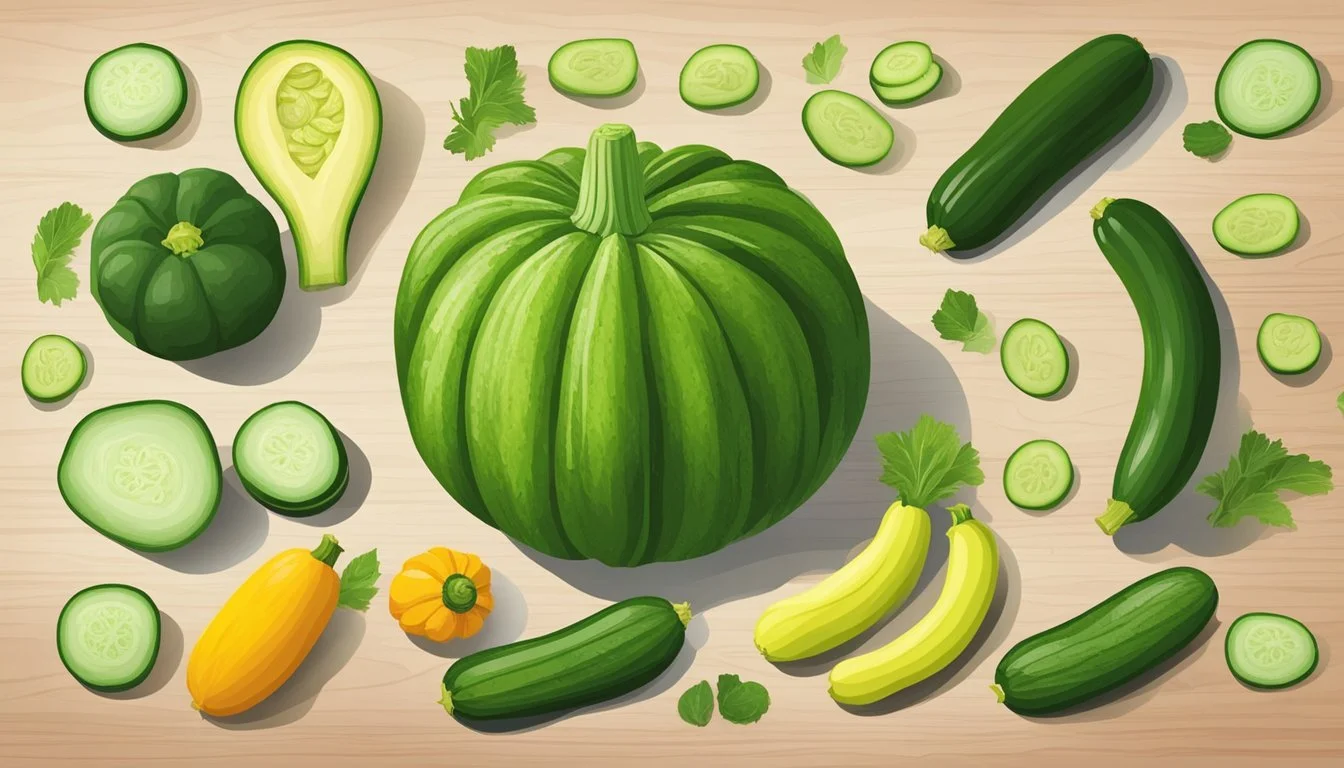Chayote Substitutes
Best Alternatives for Your Recipes
Looking to replace chayote in your recipes but not sure where to start? This versatile vegetable, known for its mild flavor and unique texture, is a favorite in many dishes from salads to stews. For those seeking a quick alternative, zucchini stands out as the best substitute due to its similar flavor profile and widespread availability.
Other excellent substitutes include bell peppers, which can add a splash of color and taste to your meals, and jicama, known for its crunchy texture and subtle sweetness. Cucuzza, or bottle gourd, also makes a fantastic replacement, especially in cooked dishes, offering a mildly nutty flavor.
Whether you're out of chayote or just looking to try something new, these substitutes will keep your dishes flavorful and satisfying. Dive in to discover how these alternatives can seamlessly fit into your favorite recipes.
Understanding Chayote
Chayote is a unique vegetable popular in various dishes. It's known for its mild flavor, crisp texture, and nutritional benefits, making it a versatile ingredient in many cuisines.
Nutritional Profile
Chayote offers an impressive array of nutrients. It's particularly rich in vitamin C, which supports the immune system and acts as a powerful antioxidant. Additionally, it contains significant amounts of dietary fiber, aiding in digestion and promoting healthy gut bacteria.
Chayote is also low in calories and contains essential vitamins and minerals like vitamin B6, folate, and potassium. It's a fantastic choice for those looking to maintain a healthy diet, as its nutrient-dense profile can help support various bodily functions.
Culinary Uses
Chayote's versatility extends to a wide range of culinary uses. It's a staple in many cuisines and can be used in soups, stews, salads, and casseroles. In recipes, it can be eaten raw or cooked, retaining a crisp texture that holds up well in various cooking methods.
In salads, raw chayote adds a refreshing crunch, similar to cucumber. When cooked, it can take on flavors from other ingredients while adding a slightly sweet, subtle flavor to dishes. It's common in dishes from Latin American and Asian cuisines, where its adaptive nature is highly prized.
Flavor and Texture
The flavor of chayote is mild and slightly sweet, making it an adaptable ingredient in many dishes. Its texture is crisp when raw, similar to an apple or jicama, and retains some firmness when cooked. This makes it ideal for adding a crunchy element to salads and a unique texture to cooked dishes.
Its subtle flavor allows it to blend seamlessly into various recipes without overpowering other ingredients, making it a valuable addition to any kitchen. Its mild flavor and crisp texture make it versatile, highlighting its essential role in enhancing both raw and cooked dishes.
Top Chayote Substitutes
Chayote, also known as vegetable pear, can be substituted with various vegetables in cooking. The most common alternatives include zucchini, different types of squash, and some root vegetables. Each substitute offers unique textures and flavors that can fit diverse culinary needs.
Zucchini
Zucchini is a versatile ingredient, often touted as the best substitute for chayote. Known for its mild flavor and tender texture, zucchini can be used both cooked and raw. Grill, roast, or sauté zucchini to bring out its natural sweetness.
In raw applications, it adds a slight crunch to salads. As a summer squash, zucchini is readily available in most grocery stores, making it a convenient choice. When selecting zucchini, opt for firm, smooth, and shiny specimens to ensure the best quality.
Squash Varieties
Various squash types can replace chayote in recipes. Yellow squash, also known as crookneck squash, offers a slightly sweet and nutty flavor. It works well in casseroles and stir-fries. Pattypan squash provides a similar texture and can be used in stews and soups.
Green papaya is less common but adds a crisp, veggie-like texture to salads and cooked dishes. Other squashes like cucuzza and fuzzy melon can also be used. Look for young, tender squashes for the most appealing texture and taste.
Root Vegetables
Root vegetables like potato, kohlrabi, and celeriac can be effective chayote substitutes, especially in cooked dishes. Potatoes bring a starchy texture that is ideal for soups, stews, and casseroles. They absorb flavors well and provide a hearty base.
Kohlrabi, with its crisp and slightly bitter taste, can be used both raw and cooked. Slice thinly for salads or roast for a unique twist. Celeriac, with its celery-like flavor, adds depth to purees and mash recipes. Each of these root vegetables offers a distinct profile that can enhance various dishes.
Other Unique Substitutes
When looking for unique alternatives to chayote, several vegetables from the cucumber and gourd family, as well as more exotic options, provide similar textures and flavors. Bell pepper variants also offer colorful and tasty substitutes.
Cucumber and Gourd Family
Cucumber and bottle gourd (cucuzza) are excellent replacements for chayote. Cucumbers are refreshing and hydrating, offering a crisp texture that works well in salads and cold dishes. For a tender, cooked option, cucuzza is a wonderful choice. This vegetable has a mild, nutty taste and combines the best qualities of zucchini and cucumber, fitting seamlessly into recipes that typically call for chayote.
Bottle gourds are commonly used in Latin American cuisine, where their versatile nature makes them stars in soups, stews, and sautés. Including cucumbers or cucuzza in place of chayote provides both crunch and tender texture, enhancing a variety of dishes.
Exotic Alternatives
Jicama and bok choy are noteworthy exotic alternatives to chayote. Jicama, a root vegetable, is low in calories but high in fiber and vitamin C, giving a crunchy texture and mild sweetness suitable for both raw and cooked applications. It's particularly good in salads, providing a refreshing crunch.
Bok choy is another excellent option, especially for stir-fries and soups. Its tender leaves and crunchy stalks offer a balance of textures and absorb flavors well. Both of these vegetables add unique characteristics to meals, making them compelling substitutes for chayote.
Bell Pepper Variants
Bell peppers, especially the green variety, serve as vibrant and tasty replacements for chayote. They introduce a mild sweetness and a pop of color to any dish. Bell peppers can be chopped and used in casseroles or sliced for stews, giving a pleasant texture and flavor.
Their versatility makes them suitable for various cooking methods, whether roasted, sautéed, or grilled. As a colorful addition, bell peppers can elevate the visual appeal of a meal while providing essential nutrients and a crunchy bite.
Using these bell pepper variants ensures that the dishes remain delicious and nutritious, substituting chayote without compromising on taste or texture.
Considerations When Substituting
When substituting chayote in recipes, it is important to consider the taste, texture, and health benefits to ensure a harmonious integration into the dish. Different substitutes can vary greatly in these aspects.
Taste and Flavor Matching
Taste is paramount when selecting a substitute for chayote. Zucchini is often cited as a top choice due to its mild, slightly sweet flavor which closely resembles chayote. Cucumber can also be used, especially in raw preparations like salads, as it imparts a similarly fresh and light flavor despite having a bit more water content.
Cucuzza offers a mildly nutty taste and can be compared to a blend of zucchini and cucumber. It's crucial to match the substitute's flavor to the dish to avoid jarring contrasts. Always consider the intensity of flavors and opt for substitutes that will compliment the recipe cohesively.
Texture Considerations
Texture significantly impacts the culinary experience. Chayote's crisp texture is one of its defining characteristics, contributing a satisfying crunch to dishes. When substituting for cooked dishes, zucchini again proves to be a versatile option, softening similarly when cooked.
For raw applications, cucumber is ideal, providing a crunch that mirrors chayote’s texture. Cucuzza is another satisfactory substitute, but make sure to select young squash to maintain a tender texture. Adjust the slicing thickness to achieve the desired texture in the final dish.
Health and Dietary Benefits
Nutritional content should not be overlooked. Chayote is nutrient-rich, high in dietary fiber, antioxidants, and vitamins like C and K, promoting healthy digestion and overall wellness. Substitutes like zucchini also offer dietary fiber and vitamins, although with slight variations.
Cucumbers are particularly hydrating and provide vitamin K while being low in calories. Cucuzza carries similar health benefits, contributing to fiber intake and providing a range of micronutrients. When selecting substitutes, consider the health profile to maintain the nutritive value of the dish.
How to Substitute Chayote in Recipes
Substituting chayote in recipes can be accomplished with various alternatives that suit soups, salads, stews, and more. Key factors include using the right substitution ratios, adjusting cooking methods, and selecting complementary flavors.
Substitution Ratios
When replacing chayote, a 1:1 ratio often works well. For example, use one cup of zucchini for one cup of chayote. Cucumbers, particularly in salads, also follow this ratio.
Jicama, with its crispy texture, can be used similarly in raw dishes. Bell peppers add a distinct flavor and work in casseroles and stews. Substitution ratios are straightforward, ensuring balanced and flavorful results.
Adjusting Cooking Methods
Different substitutes may require slight adjustments in cooking methods. Zucchini and cucuzza can be used in stir-fries and sautéed dishes. They share cooking times comparable to chayote.
Bell peppers may need slightly longer to soften in stews. For stuffed dishes, replace chayote with cucuzza, as it holds up well to baking and stuffing. Keep an eye on texture when cooking to ensure consistency with the original recipe.
Flavor Combinations and Pairings
Each substitute brings unique flavors and works well with different ingredients. Zucchini has a mild flavor and pairs seamlessly with garlic, cheese, and protein. Cucuzza adds a slightly nutty and rich taste that complements savory fillings.
Cucumbers are crisp and refreshing, ideal in fresh salads. Bell peppers offer sweetness and vibrant color, enhancing stews and casseroles. Consider adding complementary flavors to enhance the dish, balancing the textures and tastes of each substitute effectively.
By focusing on suitable substitutes, correct ratios, and proper cooking adjustments, you can maintain the integrity and deliciousness of recipes calling for chayote.
Conclusion
When searching for a substitute for chayote, there are several excellent options. Each substitute offers a unique twist to your dishes.
Zucchini stands out as a versatile alternative. It has a mildly sweet and slightly bitter flavor, making it a suitable option for both raw and cooked applications.
Jicama offers a crisp, fresh texture. Its slightly sweet flavor makes it a great option in salads or as a raw snack.
Bok Choy is another good choice, especially for stir-fries and soups. Its crunchy texture when raw and tender juiciness when cooked provides a nice balance.
Cucuzza, also known as bottle gourd, has a mildly nutty flavor. It can be used in most recipes that call for cooked chayote.
These substitutes are readily available and can easily complement Caribbean and Latin American cuisines where chayote is traditionally used.
By choosing the right substitute, you can maintain the essence of your dish and enjoy a variety of flavors and textures.







